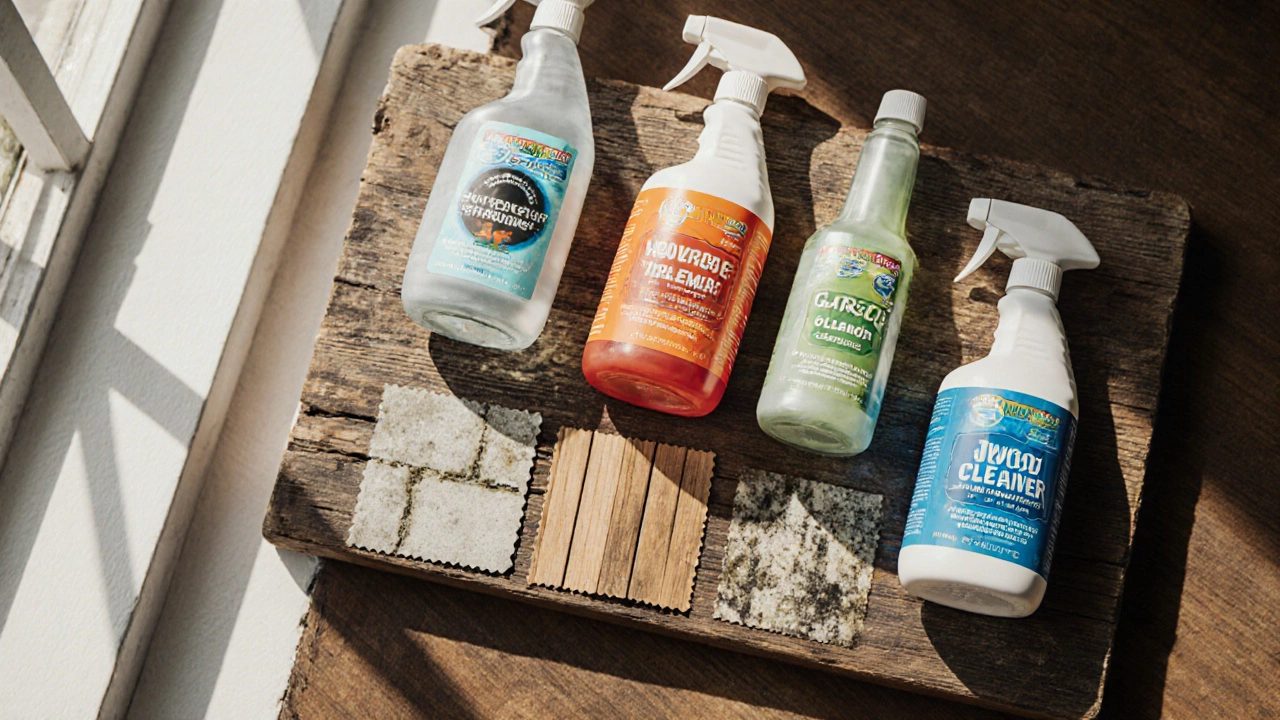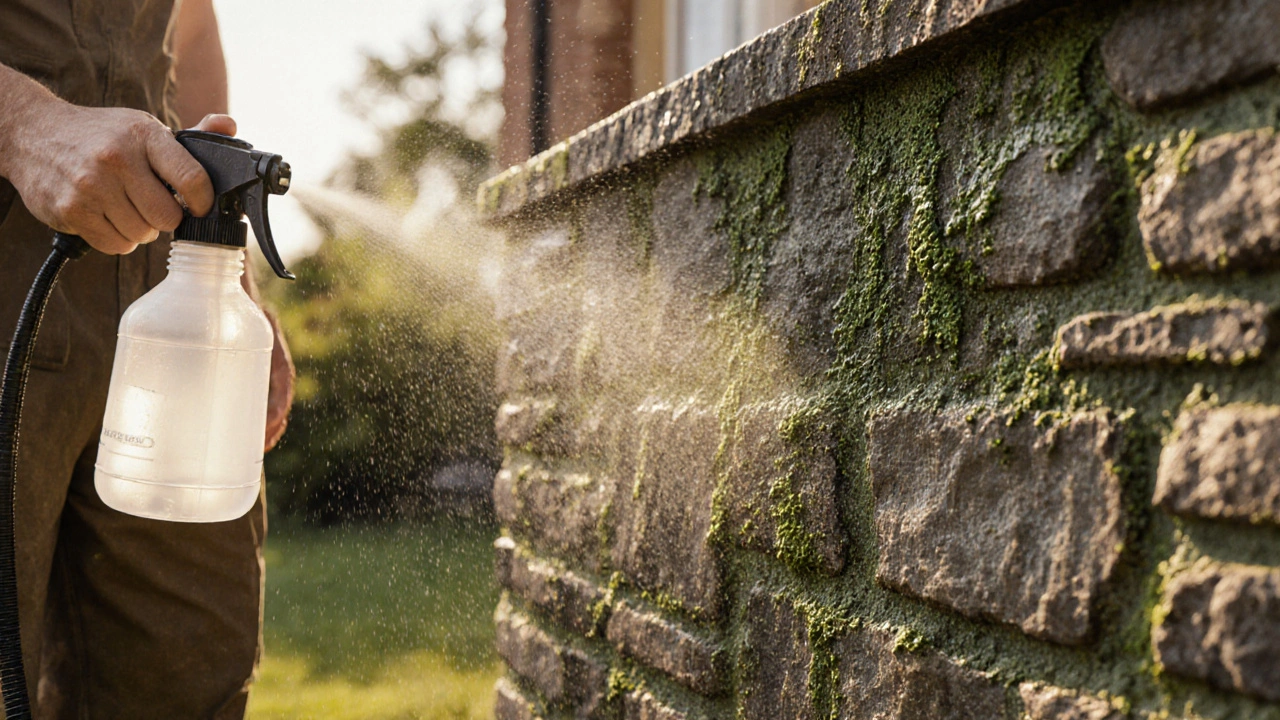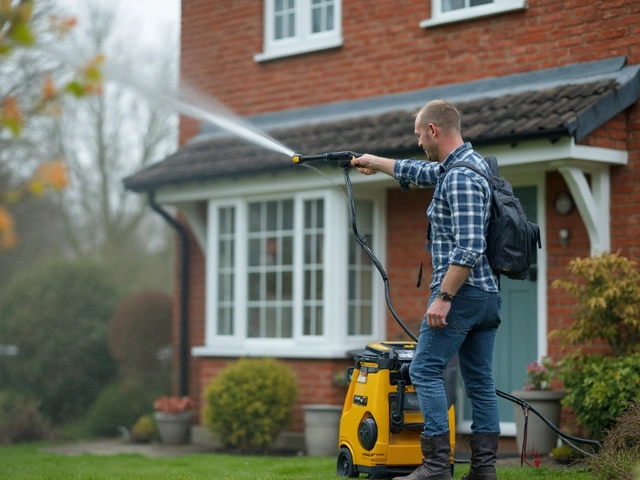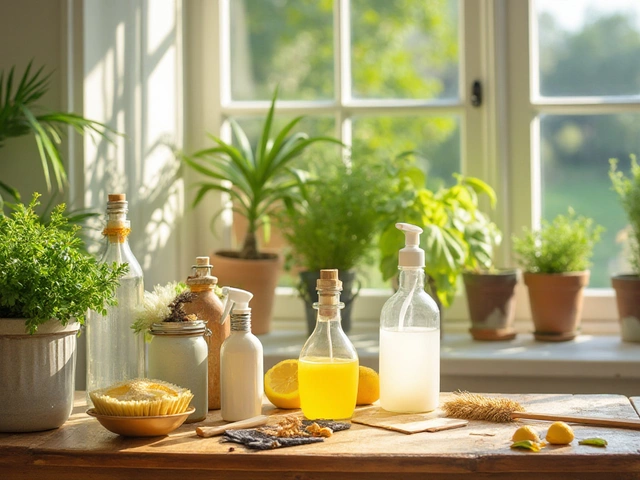Pre-Wash Spray Selector
Recommended Spray
Recommended for your combination
pH Range
Key Safety Note
Application Tips
When tackling grime, Pressure washing is a method that uses high‑pressure water to blast away dirt. But the water alone often struggles with grease, moss, or deep‑set stains. That’s where a good pre‑wash spray comes in - it loosens the filth so the jet can finish the job cleanly and quickly.
Why a pre‑wash spray matters
Skipping the spray means you’re relying on raw force. On smooth surfaces like painted wood or sealed concrete, the pressure can cause paint to peel or sealant to crack. On porous surfaces such as brick or stone, water can be forced into cracks, creating hidden moisture pockets that later lead to mold. A well‑chosen spray softens oil, algae, and mildew, letting the water do the heavy lifting without over‑pressurising the surface.
Common categories of pre‑wash solutions
Not every spray works for every job. Below is a quick rundown of the most popular types and what they’re best at.
- Detergent - Ideal for everyday dust and light soil on decks, driveways, and garden furniture.
- Degreaser - Cuts through garage oil stains, kitchen greases, and motor‑bike grime.
- Household bleach - Kills mold, mildew, and algae on stone walls, roof tiles, and shaded patios.
- Eco‑friendly cleaner - Plant‑based formulas that work well on the same surfaces as detergents but with lower environmental impact.
- Wood cleaner - Gentle, pH‑balanced solutions that clean but don’t strip wood sealants.
- Concrete cleaner - Acidic or alkaline blends designed to lift oil and rust from concrete slabs.
- Mildew remover - Specialized surfactants that target fungal growth without harsh chemicals.
Matching spray to surface type
Choosing the right product is mostly about the material you’re cleaning and the contaminant you’re fighting. Here’s a practical matrix you can keep on the garage wall.
| Surface | Common contaminant | Recommended spray | pH range | Safety notes |
|---|---|---|---|---|
| Painted wood | Dust & light mildew | Detergent | 7‑9 | Test a hidden spot for colour fade |
| Garage concrete | Oil & grease | Degreaser | 6‑8 | Wear gloves; rinse thoroughly |
| Stone façade | Mold & algae | Bleach (1:10 dilution) | 11‑12 | Avoid vegetation; wear eye protection |
| Garden deck | General dirt | Eco‑friendly cleaner | 7‑9 | Biodegradable - safe for pets |
| Wood fence | Weather stains | Wood cleaner | 8‑10 | Don’t saturate; re‑seal after drying |

Mixing and applying the spray correctly
Even the best formula can backfire if you mix it wrong. Here are the steps most professionals follow:
- Read the label for recommended dilution - most detergents use 1:20, degreasers 1:10, bleach 1:10.
- Fill a clean bucket with warm water - warm water helps surfactants work faster.
- Measure the chemical with a cup or a graduated cylinder. Accuracy matters for safety and performance.
- Stir gently; avoid splashing.
- Transfer the mixture to a garden sprayer or pump‑up bottle. A low‑pressure sprayer (≤40 psi) spreads the solution evenly without over‑atomising.
- Apply from the bottom up. This prevents streaks and makes sure runoff helps wash away dirt from higher sections.
- Let the spray dwell for 5‑10 minutes. For tough oil stains, extend to 15 minutes - but never let it dry completely.
- Rinse with the pressure washer on a wide‑angle nozzle (25‑40°) at a moderate pressure (1,500‑2,000 psi for most surfaces).
Remember, pre‑wash spray is the bridge between a dirty surface and a spotless finish.
Common pitfalls and how to avoid them
Even seasoned DIYers slip up. Spot the red flags before they turn into costly repairs.
- Using too strong a chemical on delicate surfaces - Acidic cleaners on painted wood can strip the paint. Stick to pH‑balanced options.
- Skipping the dwell time - Rushing the spray means the surfactant never breaks down the grime.
- Mixing incompatible chemicals - Never combine bleach with ammonia or acid cleaners; the reaction creates toxic gases.
- Applying at full pressure - A low‑pressure sprayer gives uniform coverage. High pressure can push the chemical into cracks.
- Not rinsing fully - Residue can attract new dirt or cause streaks once the surface dries.

Pre‑wash checklist - everything you need before you start
- Identify surface material and contaminant type.
- Select the matching spray from the matrix above.
- Gather safety gear: gloves, goggles, long sleeves.
- Prepare clean water and the correct dilution container.
- Test the solution on a small, hidden area.
- Have a low‑pressure sprayer and a pressure washer with an appropriate nozzle ready.
- Plan a clear start‑to‑finish flow to avoid stepping on wet areas.
Bonus tips for eco‑conscious cleaners
If you’re worried about runoff affecting garden beds, choose plant‑based cleaners and rinse with a hose that directs water away from vegetation. You can also collect the rinse water in a bucket and reuse it for watering non‑edible plants - just make sure no bleach was used.
Do I need to use a pre‑wash spray on every pressure washing job?
No. Light dust on a sealed patio often comes off with water alone. But oil, mold or stubborn grime usually require a chemical boost to break down before the jet hits.
Can I mix bleach with a degreaser for tougher stains?
Never. Mixing bleach with other cleaners can release chlorine gas, which is hazardous. Stick to one product at a time and rinse thoroughly before switching.
What pressure setting should I use after applying a spray?
Start with a moderate pressure of 1,500 psi and a 25‑40° nozzle. Increase only if residue remains, but keep an eye on the surface to avoid damage.
Are eco‑friendly sprays as effective as traditional chemicals?
For most household grime, yes. Plant‑based surfactants lift dirt just as well, though they may need a slightly longer dwell time.
How long can I store a mixed pre‑wash solution?
Ideally mix just before use. If you must store, keep it in a sealed container away from sunlight and use it within 24 hours for most detergents; bleach solutions degrade faster and should be discarded after a few hours.





